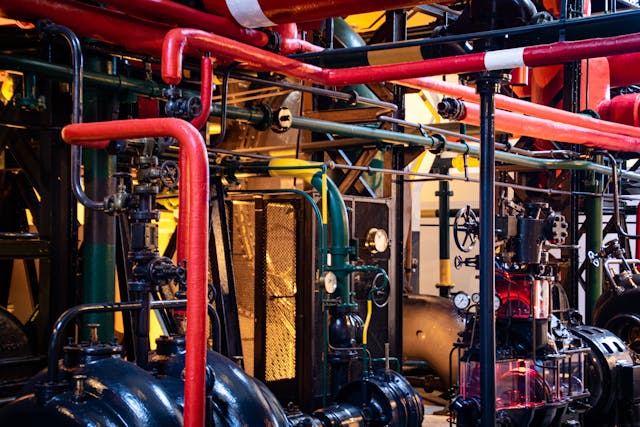Corrugated pipes are an essential component in various construction and drainage systems, known for their durability and versatility. These pipes, recognized by their ridged design, serve multiple purposes, from efficient drainage solutions to structural applications like culverts. Whether you’re dealing with residential landscaping or large-scale infrastructure projects, corrugated pipes offer reliable performance.
Read about Shower Drain here!
What Is a Corrugated Pipe?
A corrugated pipe features a series of ridges and grooves that provide structural strength while maintaining flexibility. Made from materials like plastic or metal, these pipes are designed to handle heavy loads and challenging conditions. Their lightweight nature makes them a popular choice in many industries.
Common Types of Corrugated Pipes
Several types of corrugated pipes are available to suit different needs, including:
- Culvert Pipe
Culvert pipes are used in road construction and water management systems. They facilitate water flow under roads, driveways, or railways, preventing flooding and erosion. Corrugated metal culvert pipes are especially popular due to their strength and ability to withstand heavy loads. - Perforated Drainage Pipe
Perforated corrugated pipes are designed to manage water drainage effectively. These pipes have small holes or slots that allow water to enter, making them ideal for redirecting groundwater or managing surface water in landscaping projects. - Corrugated Drain Pipe
Corrugated drain pipes are a versatile solution for directing water away from foundations, driveways, and other areas prone to water pooling. Their flexibility allows them to navigate around obstacles, making installation easier. - Drain Tile Pipe
A drain tile pipe is another type of perforated drainage pipe commonly used in agricultural and residential applications. It helps control water levels in the soil, preventing waterlogging and promoting healthy plant growth. - 4-Inch Corrugated Drain Pipe
The 4-inch corrugated drain pipe is a standard size used in residential drainage systems. Its compact size makes it suitable for applications like downspout drainage, foundation protection, and garden irrigation. - Corrugated Metal Pipe
Corrugated metal pipes are used in heavy-duty applications, including culverts, stormwater systems, and bridge construction. Made from steel or aluminum, they provide exceptional strength and longevity, even in demanding environments.
Benefits of Using Corrugated Pipes
Corrugated pipes offer several advantages, making them a go-to option for many projects:
- Durability: The corrugated design enhances the pipe’s structural integrity, enabling it to handle high-pressure loads and resist impacts.
- Flexibility: Plastic corrugated pipes, in particular, are flexible enough to accommodate curved paths, reducing the need for multiple fittings.
- Lightweight: Compared to traditional materials like concrete, corrugated pipes are lightweight, making transportation and installation more convenient.
- Cost-Effective: With their long lifespan and ease of installation, corrugated pipes provide excellent value for money.
- Versatility: Available in various sizes and materials, corrugated pipes can be tailored to suit specific applications.
Applications of Corrugated Pipes
Corrugated pipes are used in a wide range of projects, including:
- Stormwater Management: Corrugated drain pipes and culvert pipes efficiently direct stormwater away from roads, parking lots, and properties, preventing flooding.
- Landscaping: Perforated drainage pipes and drain tile pipes are ideal for creating French drains, redirecting water away from gardens, and improving soil drainage.
- Agriculture: Farmers use corrugated pipes to manage irrigation and control water levels in their fields.
- Road Construction: Corrugated metal pipes are often installed beneath roads and driveways to allow water to flow without eroding the surface.
- Home Drainage Systems: Homeowners rely on 4-inch corrugated drain pipes for downspout extensions and to protect their foundation from water damage.
Choosing the Right Corrugated Pipe
Selecting the right corrugated pipe depends on the specific needs of your project. Consider factors such as:
- Material: Plastic pipes are lightweight and corrosion-resistant, while metal pipes offer superior strength for heavy-duty applications.
- Size: Ensure the pipe diameter matches the volume of water you need to manage. For example, a 4-inch corrugated drain pipe is suitable for smaller residential projects.
- Perforation: Choose perforated drainage pipes for groundwater control and solid pipes for directing water without seepage.
Installation Tips for Corrugated Pipes
Proper installation is key to ensuring the efficiency and longevity of corrugated pipes. Here are a few tips:
- Plan the Layout: Map out the drainage system, identifying the best path for the pipe to direct water away from the area.
- Prepare the Trench: Dig a trench wide enough to accommodate the pipe, ensuring a slight slope for proper water flow.
- Add a Gravel Base: For perforated pipes, lay a gravel base to facilitate water filtration and prevent clogging.
- Secure the Pipe: Place the pipe in the trench and secure it with additional gravel or soil.
- Test the System: Run water through the pipe to ensure proper flow and make any necessary adjustments.
Conclusion
Corrugated pipes are indispensable in managing water and improving infrastructure. Their versatility, durability and cost-effectiveness make them suitable for a wide range of applications, from residential projects to large-scale construction. By choosing the right type of corrugated pipe and installing it correctly, you can ensure efficient water management and long-lasting performance for your project.
